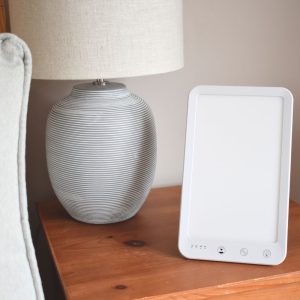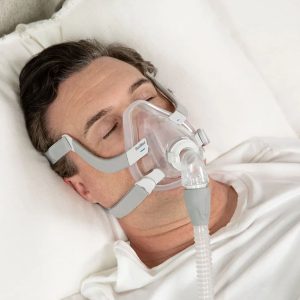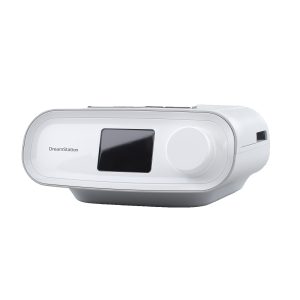Fact Checked
Intus Healthcare’s writers, customer service team, and sleep experts review and ensure this information is accurate.
Last updated on May 31st, 2024 at 09:17 am
What is Seasonal Affective Disorder?
Seasonal Affective Disorder (SAD) is a type of seasonal depression that occurs during the winter. Typically, SAD affects people during the darker months (November till February) as the days are shorter. The reduced daylight hours disrupt the body’s internal clock (circadian rhythm) and can affect the production of certain neurotransmitters and hormones. It can cause low serotonin, melatonin, and vitamin D, affecting mood and sleepiness.
Common causes of SAD
Research is still being carried out to determine the cause of SAD. However, it commonly affects those living in areas with reduced daylight exposure. Other factors that can cause SAD include a disrupted body clock, problems maintaining melatonin and serotonin levels, weather, and temperature.
How SAD affects the body
The disorder reduces the amount of serotonin in the body, a neurotransmitter that helps regulate mood. The reduced serotonin levels are associated with the symptoms of depression and anxiety.
During the darker months, many people experience higher levels of the hormone melatonin. The hormone helps to regulate the sleep-wake cycle and is produced in response to darkness. The heightened amount can lead to symptoms of fatigue and cause oversleeping.
The disruption to the body’s circadian rhythm makes it hard to regulate various physiological processes, including sleep patterns, hormone secretion, and mood.

Seasonal Affective Disorder Symptoms
The condition begins in early adulthood and continues throughout a person’s life. The symptoms of SAD can vary in severity and may include:
- Persistent feelings of sadness or low mood.
- Loss of interest or pleasure in activities once enjoyed (anhedonia).
- Fatigue or low energy levels, often leading to napping or oversleeping.
- Frequent nightmares.
- Difficulty concentrating and making decisions.
- Increased appetite, particularly for carbohydrates and comfort foods.
- Irritability and increased sensitivity to stress.
- Feelings of hopelessness or worthlessness.
- Social withdrawal and a desire to isolate oneself.
- Sluggishness or a heavy feeling in the arms or legs.
- Difficulty waking up in the morning (hypersomnia).
- Decreased libido or interest in sexual activity.
Seasonal Affective Disorder in women
SAD is more commonly reported in women than in men, and research suggests it is diagnosed four times more often in women (1). Women may be more vulnerable to the condition during specific life stages, such as during adolescence, pregnancy, and menopause, when hormonal fluctuations can interact with SAD symptoms.
Some researchers believe that fluctuations in female sex hormones, particularly oestrogen, may influence vulnerability to SAD or exacerbate its symptoms. The decline of oestrogen can result in mood changes and cause depressive feelings. Symptoms may also worsen during the premenstrual phase of the menstrual cycle for some women.
Related page: Do women need more sleep than men?
Seasonal Affective Disorder in men
While research suggests the condition is more prevalent in women, it can also impact men (2). While the core symptoms of SAD—such as low mood, fatigue, and changes in sleep and appetite—tend to be similar for both genders, some studies have suggested that men may be more likely to experience irritability and aggression. In contrast, women may exhibit more atypical symptoms like increased appetite and weight gain.
Men may be less likely to seek professional help for mental health issues, including SAD, due to societal expectations of masculinity and a potential reluctance to express vulnerability. This could lead to underdiagnosis and undertreatment in men with SAD.

How is SAD diagnosed?
If you are experiencing symptoms of Seasonal Affective Disorder, you should visit your GP to discuss how you are feeling. Your GP may carry out a psychological assessment of your mental health. They may examine your lifestyle, mood, and other symptoms. As there are many different types of depression, it can be challenging to determine if a person has SAD; therefore, it can take some time to come to a diagnosis.
Treatment Methods
The condition has various treatment methods, varying depending on a person’s severity.
Light Therapy: Light therapy is also known as Phototherapy; it is a treatment that involves using artificial light to replicate daylight.
During light therapy, you must sit beside a lamp or light box that emits bright artificial light. The light mimics sunlight: typically, using the device at 10,000 lux (a measure of brightness) for 30 minutes a day is suggested. The artificial light causes the brain to produce more serotonin, improving mood and energy.
The devices can be adjusted in duration, intensity, timings, and sessions to adapt to the user.
Psychotherapy: Psychotherapy, such as Cognitive-Behavioural Therapy (CBT), can be used to treat SAD.
CBT helps individuals by identifying and challenging negative thought patterns and behaviours associated with their seasonal depression. Therapists work with patients to develop coping strategies and problem-solving skills to manage their symptoms. This may involve setting goals, restructuring distorted thinking, implementing daily routines, and prioritising exposure to natural light and physical activity. Moreover, psychotherapy provides a supportive and empathetic environment where individuals can explore the emotional impact of SAD, which can often be isolating and distressing. Therapists help clients develop strategies to maintain social connections and engage in self-care practices that can alleviate symptoms.
Medications: Depending on the severity of a person’s SAD, antidepressants can help correct the chemical imbalance in the patient’s body. Commonly, Selective Serotonin Reuptake Inhibitors (SSRIs) are the preferred type of antidepressant for treating SAD. They increase the level of serotonin in the brain, which can help lift your mood.
Please be aware that antidepressants can take time to take effect.
Self-care: Improving your sleep hygiene can enhance your mood and reduce symptoms of depression.
Environment: Keep your environment bright by opening blinds, turning on lights and sitting closer to windows.
Go outside: Spend time outdoors in the sunlight by walking or sitting outside to soak up the sun. Spending time in natural sunlight increases your vitamin D levels and improves your mood.
Exercise: Regular exercise helps to improve mood, reducing stress and anxiety.
Eat well: Eat a balanced diet to help your body function efficiently. There are a variety of foods that can help you sleep; these include those high in tryptophan. Avoiding eating too close to bed helps your body have time to digest your food and sleep better.
See friends & family: Take time to socialise with those closest to you to improve your mental health.
Join a support group: Joining and sharing your feelings in a support group can help make your symptoms more bearable.
Sleep: Gaining quality, restorative sleep sets you up for a positive day ahead. Sleeping between 7-9 hours ensures you wake up refreshed and enhances your mood.

SAD and Sleep Apnoea
Obstructive Sleep Apnoea (OSA) is a sleep condition that affects a person’s breathing during sleep. When OSA is combined with SAD, it can have a destructive effect on mental and sleep health. Both conditions affect sleep quality, impacting your well-being.
The effect SAD has on Sleep Apnoea
The co-occurrence of Sleep Apnoea and Seasonal Affective Disorder can pose additional challenges for individuals, as both conditions can exacerbate each other’s symptoms. SAD-related oversleeping can contribute to weight gain, which can increase the risk of developing OSA.
Additionally, the fatigue and mood disturbances associated with SAD can exacerbate Sleep Apnoea symptoms such as excessive daytime sleepiness and mood disturbances. SAD symptoms can affect sleep patterns and quality. This disruption can result in increased fatigue, oversleeping (hypersomnia), and heightened melatonin production, making it more challenging to maintain a regular sleep-wake cycle.
In summary, both conditions exacerbate one another, increasing tiredness and promoting unhealthy behaviours. Treatment should address each condition separately while also considering their potential interactions.
The effects Seasonal Affective Disorder has on mood usually end as spring approaches and daylight elongates. In contrast, depression and anxiety are associated with OSA all year round and are not caused by decreased light.
Home Sleep Apnoea Testing
If you have had SAD confirmed but still experience loss of sleep and low mood, you may have a sleep disorder. Other common symptoms of Sleep Apnoea include chronic snoring and choking during sleep. Fortunately, if you have symptoms, a home sleep test is a simple way to confirm if you have or have not got the condition.
Our home sleep test requires one night of recorded sleep data; our sleep clinicians then analyse your data to determine whether OSA is present. The test records your body position, snoring intensity, heart rate, blood oxygen levels and peripheral arterial tone.
Your detailed sleep report will be with you within two working days after completing the test. If Sleep Apnoea is detected, you will receive tailored treatment recommendations and support. We offer follow-up advice and guidance throughout the process so you can regain quality sleep as fast as possible. Treating OSA manages symptoms, so you wake up feeling refreshed and energised all year round.
We have helped over 100,000 people with our home Sleep Testing services and medical equipment. Please get in touch with us if you would like support or have any questions.
Alternatively, you can visit your GP, who may refer you to a sleep clinic for testing. Please be aware that the waiting times for an NHS sleep study can be extensive.
References
- Melrose, S. (2015). Seasonal Affective Disorder: An Overview of Assessment and Treatment Approaches. Depression Research and Treatment, 2015. Available at: https://doi.org/10.1155/2015/178564. Accessed: 15.11.2023
- Albert PR. (2015). Why is depression more prevalent in women? Available at: https://www.ncbi.nlm.nih.gov/pmc/articles/PMC4478054/. Accessed: 14.11.2023








